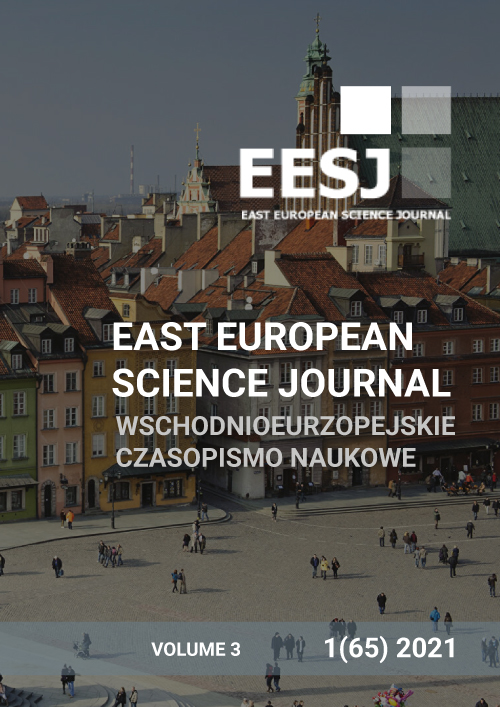PARAMETRIC MATHEMATICAL MODEL OF SEISMOACOUSTIC MONITORING
Keywords:
model, seismoacoustics, monitoring, superposition of oscillators.Abstract
In modern conditions it is necessary to create automated monitoring systems for detection and identification of the investigated objects, in order to designate their nature and obtain information. It is also necessary to create mathematical models and algorithms for detection and identification. This article proposes a mathematical model for identification of the investigated objects in the study of seismic records of explosions. Object identification tasks are associated with decision making problems. When choosing a mathematical model, it is necessary to choose a space of informative features, so as to reduce the possibility of errors. The choice of model is also determined by the possibility of its application in the signal stream generated by a series of explosions.
References
The Military and Civil Aviation Passive Radar Market: 2013 – 2023 [Elektronniy resurs] – Rezhim dostupu do resursu: http://www.researchandmarkets.com/reports/2598562/ the_military_and_civil_aviation_passive_radar#pos-0.
Sochetanie datchikov: uluchshenie situatsionnoy osvedomlennosti. Inostrannaya pechat ob ekonomicheskom, nauchno-tehnicheskom i voennom potentsiale gosudarstv-uchastnikov SNG i tehnicheskih sredstvah ego vyiyavleniya. // Tehnicheskoe osnaschenie spetssluzhb zarubezhnyih gosudarstv”. – 2013.
Petrova A. A. Teoreticheskaya gidrodinamika / A. A. Petrova, P. N. Chushkina., 1964. – 369 s.
Francis S. H. Global propagation of atmospheric gravity waves / S. H. Francis. // Journal of Atmospheric and Terrestrial Physics. – S. 1011–1054.
Gossaro E. H. Waves in the Atmosphere / E. Hooken Gossaro., 1975. – 532 s. – (Elsevier Scientific Publishing Company).
Alekseev A.S. Effekt akustoseysmicheskoy induktsii pri vibroseysmicheskom zondirovanii / A. S. Alekseev, V. M. Glynskyi., 1996. – 664 s. – (DAN).
Artru J. Ionospheric detection of gravity waves induced by tsunamis / J. Artru, V. Ducic., 2005. – (Geophys. J. Int.). – (840-848).
Dahlman O. Monitoring Underground Nuclear Explosions. Amsterdam-Oxford-New York / O. Dahlman, H. Israelson., 1977. – 440 s.
Statistical communication and detection with special reference to digital data processing of radar and seismic signals – London. – 362 s. – (Charles Griffin and Co. Ltd.).
Van Trees H. L. Detection, estimation and modulation theory / H. L. Van Trees. – New York. – 647 s. – (Part I.John Wiley & Sons Inc.).
Mostovoy V.S. Optimalnyie otsenki parametrov mikroseysmicheskogo fona. DAN
Frasier C. W. Single-channel event detector in real time. In: Seismic Discrimination, Semiannual Technical Summary to the Advanced Research Projects Agency . / C. W. Frasier., 1975. – 51 s. – (Massachusetts Institute of Technology, Lincoln Laboratory).
Gjoystdahl, H. & Husebye, E.S, 1972. A comparison of performance between pre- diction error and bandpass filters. NTNF/NORSAR, Kjeller, Technical Report No, 43.
Capon, J., Greenfield, R.J., Kolker, R.J. & Lacoss, R.T., 1968. Short period signal processing results for the large aperture seismic arrays. Geophysics, 33:452—472.
Dahlman O. Monitoring Underground Nuclear Explosions / O. Dahlman, H. Israelson // AmsterdamOxford-New York, 1977. 440 p.
Van Tris G. Teoriya obnaruzheniya, otsenok i modulyatsii. M.: Sovetskoe radio, 1972. — 744 s.
Estimation of the seismic waves parameters / V. S. Mostovoy, S. V. Mostovyi //DopovIdI NatsIonalnoYi akademIYi nauk UkraYini. - 2014. - # 2. - P118-123.
V. S. Mostovoy, S. V, Mostovyi Mathematical model of seismic signal, as a flow of physically non realizable single seismic waves // Geophysical journal – 2016. Vol. 38, # 5, p. 166-169.
Panovko Ya. G. Vvedenie v teoriyu mehanicheskih kolebaniy. Moskva, «Nauka», 1971, 240 s, 45 s.
Downloads
Published
Issue
Section
License

This work is licensed under a Creative Commons Attribution-NoDerivatives 4.0 International License.
CC BY-ND
A work licensed in this way allows the following:
1. The freedom to use and perform the work: The licensee must be allowed to make any use, private or public, of the work.
2. The freedom to study the work and apply the information: The licensee must be allowed to examine the work and to use the knowledge gained from the work in any way. The license may not, for example, restrict "reverse engineering."
2. The freedom to redistribute copies: Copies may be sold, swapped or given away for free, in the same form as the original.




